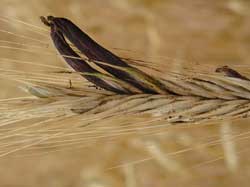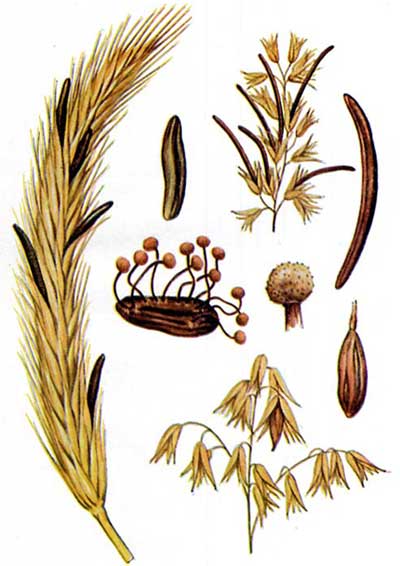Within the fungal family lies the “wayward child” known as ergot – Claviceps. For centuries, it wreaked havoc on countless lives during the Middle Ages.
 |
|
Ergot Claviceps on wheat |
Women suffered from childbirth complications and death. Initially, it was believed that this was caused by ergotism, but after many years of research, the true culprit was identified: ergot.
Ergot is a type of sac fungus that prefers to parasitize the ovaries of wheat and rye, developing into a hard, brownish-black fungal sclerotium resembling a chicken’s spur. When people consume flour contaminated with ergot, they fall ill. Symptoms begin with muscle cramps in the limbs, followed by numbness in the hands, feet, and other body parts, ultimately leading to necrosis and death—an extremely tragic outcome. This condition is known as ergotism.
Livestock that graze on grass contaminated with ergot also suffer from poisoning and death.
By the 18th century, advancements in the milling industry allowed for the elimination of ergot, effectively controlling ergotism. Furthermore, researchers discovered an alkaloid in ergot that promotes blood vessel contraction and stimulates the nervous system, leading to the development of medications for controlling bleeding and inducing labor. Thus, the “wayward child,” ergot, was successfully rehabilitated.

Ergot Claviceps on wheat along with other types of fungi (Image: swsbm)


















































